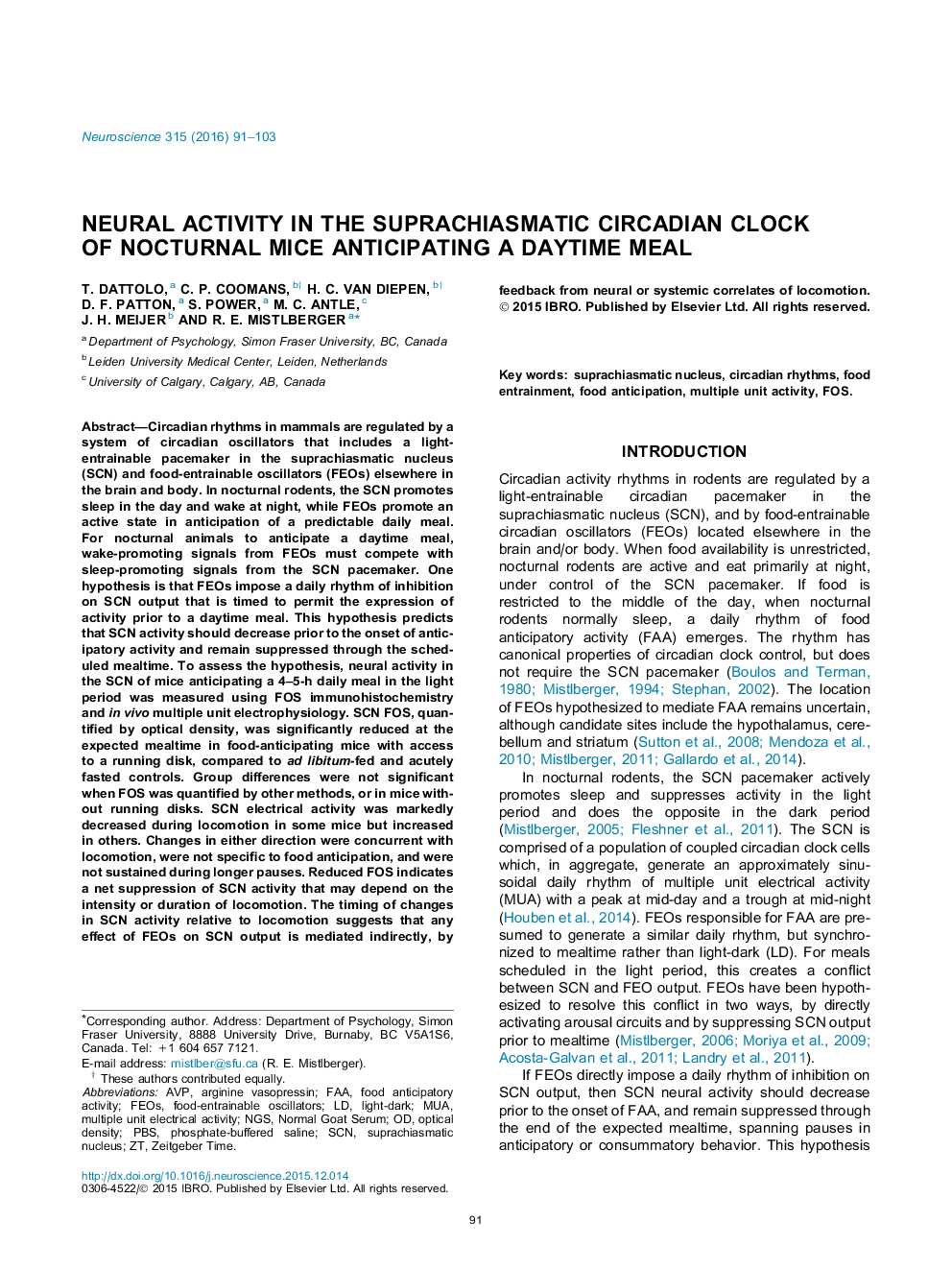| کد مقاله | کد نشریه | سال انتشار | مقاله انگلیسی | نسخه تمام متن |
|---|---|---|---|---|
| 6271712 | 1614761 | 2016 | 13 صفحه PDF | دانلود رایگان |
عنوان انگلیسی مقاله ISI
Neural activity in the suprachiasmatic circadian clock of nocturnal mice anticipating a daytime meal
ترجمه فارسی عنوان
فعالیت عصبی در ساعت های شبانه روزانه ای از موش های شبانه پیش بینی غذا روزانه
دانلود مقاله + سفارش ترجمه
دانلود مقاله ISI انگلیسی
رایگان برای ایرانیان
کلمات کلیدی
موضوعات مرتبط
علوم زیستی و بیوفناوری
علم عصب شناسی
علوم اعصاب (عمومی)
چکیده انگلیسی
Circadian rhythms in mammals are regulated by a system of circadian oscillators that includes a light-entrainable pacemaker in the suprachiasmatic nucleus (SCN) and food-entrainable oscillators (FEOs) elsewhere in the brain and body. In nocturnal rodents, the SCN promotes sleep in the day and wake at night, while FEOs promote an active state in anticipation of a predictable daily meal. For nocturnal animals to anticipate a daytime meal, wake-promoting signals from FEOs must compete with sleep-promoting signals from the SCN pacemaker. One hypothesis is that FEOs impose a daily rhythm of inhibition on SCN output that is timed to permit the expression of activity prior to a daytime meal. This hypothesis predicts that SCN activity should decrease prior to the onset of anticipatory activity and remain suppressed through the scheduled mealtime. To assess the hypothesis, neural activity in the SCN of mice anticipating a 4-5-h daily meal in the light period was measured using FOS immunohistochemistry and in vivo multiple unit electrophysiology. SCN FOS, quantified by optical density, was significantly reduced at the expected mealtime in food-anticipating mice with access to a running disk, compared to ad libitum-fed and acutely fasted controls. Group differences were not significant when FOS was quantified by other methods, or in mice without running disks. SCN electrical activity was markedly decreased during locomotion in some mice but increased in others. Changes in either direction were concurrent with locomotion, were not specific to food anticipation, and were not sustained during longer pauses. Reduced FOS indicates a net suppression of SCN activity that may depend on the intensity or duration of locomotion. The timing of changes in SCN activity relative to locomotion suggests that any effect of FEOs on SCN output is mediated indirectly, by feedback from neural or systemic correlates of locomotion.
ناشر
Database: Elsevier - ScienceDirect (ساینس دایرکت)
Journal: Neuroscience - Volume 315, 19 February 2016, Pages 91-103
Journal: Neuroscience - Volume 315, 19 February 2016, Pages 91-103
نویسندگان
T. Dattolo, C.P. Coomans, H.C. van Diepen, D.F. Patton, S. Power, M.C. Antle, J.H. Meijer, R.E. Mistlberger,
